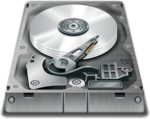Wine: VKD3D and DXVK


-
Wine's VKD3D 1.0 Released For Running Direct3D 12 Over Vulkan
The Wine project has announced the release of VKD3D 1.0, the first official release of this Direct3D 12 over Vulkan layer primarily developed at CodeWeavers. VKD3D is the approach Wine is pursuing for getting Direct3D 12 games from Windows working on Wine under Linux or also under macOS when paired with MoltenVK.
For the VKD3D 1.0 release there are D3D12 demos now working but features are known to be missing and bugs are expected. Geometry and tessellation shaders are among the big ticket items still left to be implemented in future releases.
-
DXVK 0.52 Brings More improvements For Direct3D 11 Over Vulkan
While VKD3D 1.0 is out today for Direct3D 12 mapped over Vulkan, the DXVK project for running Direct3D 11 over Vulkan is also out with a new release today.
Most prominent to the new DXVK 0.52 release is initial support for DXGI 1.2, the updated Microsoft DirectX Graphics Infrastructure that brings various updates for drivers. The initial DXGI 1.2 support in the process fixes at least Bioshock 2 Remastered as well as Frostpunk.
-
Vkd3d 1.0 Released
This is the first release of vkd3d. A lot of Direct3D 12 features are still missing and bugs are expected. The current version was tested mainly with demo applications. A number of features that are being worked on have been deferred to the next development cycle. This includes in particular geometry and tessellation shaders support, various shader translation improvements, as well as various improvements for core Direct3D 12 methods.
-
vkd3d for Direct3D 12 to Vulkan in Wine has released the first stable version
Today, the Wine developers officially announced that vkd3d for translating Direct3D 12 to Vulkan in Wine has reached 1.0.
-

- Login or register to post comments
 Printer-friendly version
Printer-friendly version- 7336 reads
 PDF version
PDF version
More in Tux Machines
- Highlights
- Front Page
- Latest Headlines
- Archive
- Recent comments
- All-Time Popular Stories
- Hot Topics
- New Members
digiKam 7.7.0 is released
After three months of active maintenance and another bug triage, the digiKam team is proud to present version 7.7.0 of its open source digital photo manager. See below the list of most important features coming with this release.
|
Dilution and Misuse of the "Linux" Brand
|
Samsung, Red Hat to Work on Linux Drivers for Future Tech
The metaverse is expected to uproot system design as we know it, and Samsung is one of many hardware vendors re-imagining data center infrastructure in preparation for a parallel 3D world.
Samsung is working on new memory technologies that provide faster bandwidth inside hardware for data to travel between CPUs, storage and other computing resources. The company also announced it was partnering with Red Hat to ensure these technologies have Linux compatibility.
|
today's howtos
|









.svg_.png)
 Content (where original) is available under CC-BY-SA, copyrighted by original author/s.
Content (where original) is available under CC-BY-SA, copyrighted by original author/s.

Recent comments
1 year 11 weeks ago
1 year 11 weeks ago
1 year 11 weeks ago
1 year 11 weeks ago
1 year 11 weeks ago
1 year 11 weeks ago
1 year 11 weeks ago
1 year 11 weeks ago
1 year 11 weeks ago
1 year 11 weeks ago